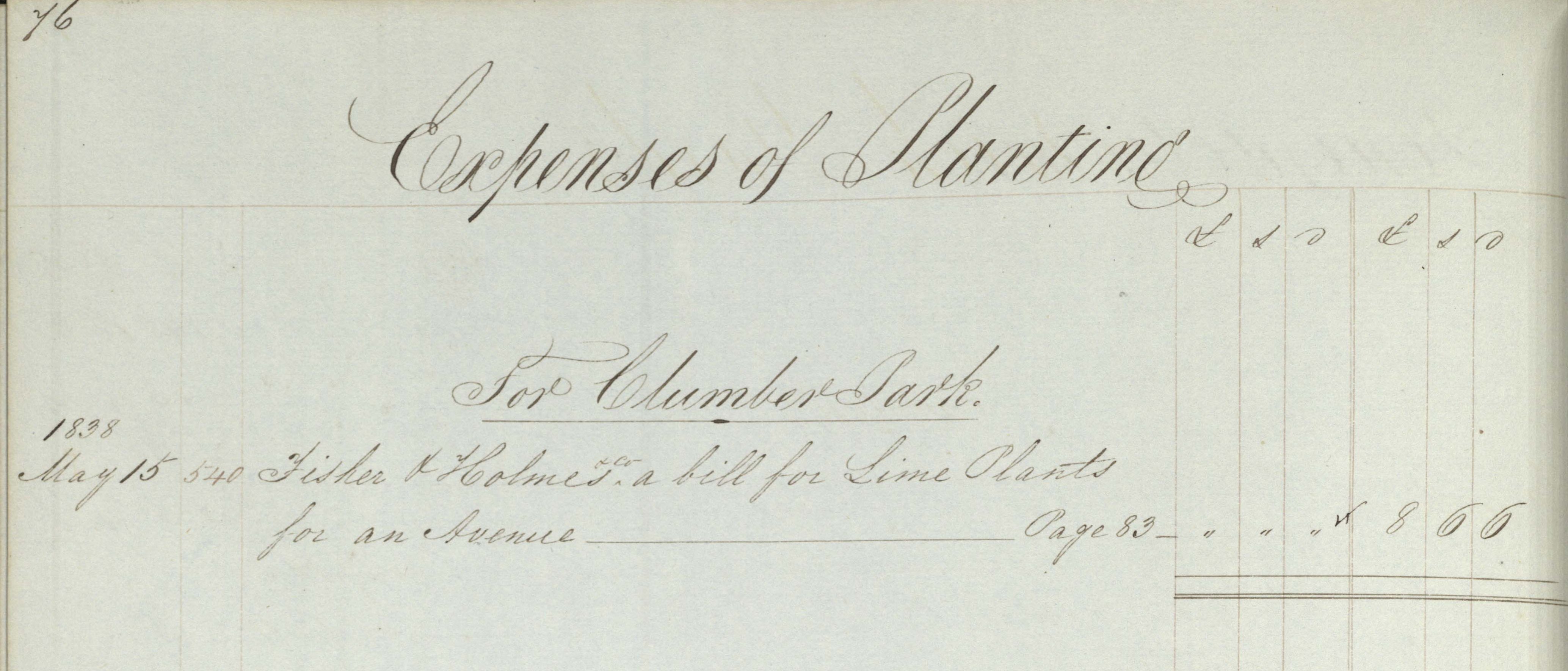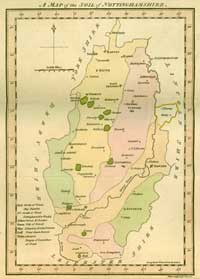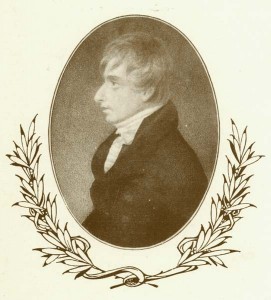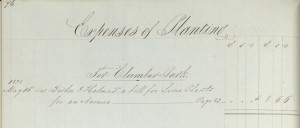
August 19, 2013, by Kathryn Steenson
Manuscripts in the Media
As a University department, it’s not surprising that many of the enquirers who contact us and visitors to the Reading Room are academics and students, both from The University of Nottingham and other institutions. What people often don’t appreciate is how often we are approached by the media, either during their initial research or because they wish to show archive documents in their programme or newspaper.

Soil map from Robert Lowe, ‘General view of the agriculture of the county of Nottingham’, c.1798
(Ref: EMSC Not 1.P6 LOW)
The type of programme ranges from prime-time general interest to in-depth documentaries. These are just a few we have been involved with this last year.
Channel 4’s “Restoration Man” features architect George Clarke renovating historic and neglected properties around Britain. An episode broadcast in January 2013 focussed on transforming a former pig barn at Egmanton Common Farm into a home. The site was built in the 1860s by Captain Henry Lumley Savile. One of the documents consulted by the researchers was a soil map from Robert Lowe’s General view of the agriculture of the county of Nottingham (London: printed for G. Nicol: printed for Richard Phillips, c.1798). It is a colour-coded printed map of the soil of Nottinghamshire indicating, for example, areas of clay, coal, and limestone. The information was required by the Board of Agriculture when drawing up improvement schemes for soil drainage, but it would also assist architects and engineers in determining if the land was suitable for a particular type of construction. We have used it previously to illustrate farming practices in an exhibition about ‘Laxton: farming in an open field village’.
The BBC’s “One Show” filmed a short feature about the Lime tree avenue at Clumber Park, formerly the seat of the Dukes of Newcastle and now a National Trust country park (the house was demolished in the 1930s). At over two miles long and containing nearly 1,300 lime trees, it is the longest double lime tree avenue in Europe and was planted in the late 1830s.
Researchers requested images of a map, diary entries, and a page from an account book noting the ‘Expenses of Planting’, recording a bill of £8 6s 6d paid to Fisher and Holmes on 15 May 1838 ‘for Lime Plants for an Avenue’ (Ref: Ne 3 A 32). The landscaping project was overseen by Henry Pelham-Clinton, the 4th Duke of Newcastle (1785-1851). The Duke was an influential figure in local politics, serving as Lord Lieutenant of Nottinghamshire from 1809 to 1839. He took an active interest in his estates and spent large sums of money acquiring and improving them, noting the details and the extravagant costs in his extensive and detailed diaries (Ref: Ne 2F), which begin after the deaths of his daughter Anna Maria and wife Georgiana in 1822 and continue until shortly before his death in 1851.
Although it hasn’t been broadcast yet, we have also assisted the producers of “Great British Railway Journeys”. Presenter Michael Portillo interviewed Lynda Pratt, Professor of Romanticism at The University of Nottingham, about Nottingham poet Henry Kirke White (1785-1806). We provided, among other images, a copy of an engraving of him taken from the menu of a banquet in his honour held a century after his death from tuberculosis aged just 21. The collection spans the years 1799-1813, covering the latter part of White’s life and events following his death. There is a large amount of correspondence between members of the White family up to the time of his death in 1806 as well as letters from friends.

Engraving of Henry Kirke White taken from the menu from a banquet marking the centenary of his death, 1906 (Ref: Kw 3/2/2)
These are just a sample of the enquiries where we were asked to supply images; we also host film crews in one of our small teaching rooms. This year is the centenary of the publication of DH Lawrence’s ‘Sons and Lovers’. Reviewed positively on first publication, critics now consider the novel to be a masterpiece of 20th century literature and one of Lawrence’s best works. We have been visited by two film crews filming material from our nationally-significant DH Lawrence collections for documentaries to be broadcast this autumn. The collections include printed editions of his writings, literary manuscripts, correspondence by and about him, a small number of artworks, newspaper cuttings, reports, photographs and a wealth of supporting secondary sources.
Media enquiries may seem an awful lot of work for what amounts to a few seconds of screen time or a column inch or two, but we are extremely proud of the many ways that the importance of our collections is recognized. TV programmes and newspapers reach audiences that would otherwise be unaware that such documents exist. It’s not unheard of for members of the public who have seen or read about a collection to contact us for further information or request copies. If you’d like to see these or any other documents we hold, you can make an appointment to visit our Reading Room on Kings Meadow Campus. If you would like to feature documents in film or print media, please contact us to discuss your requirements and costs.


Looks nice, thanks a lot for sharing.
Jess, CA